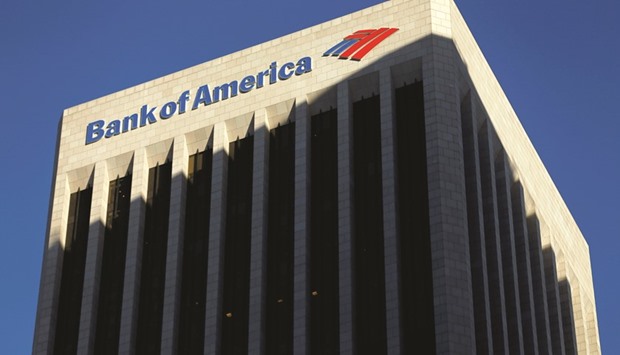Bank of America Corp, the second-largest US bank by assets, reported its first profit increase in three quarters yesterday, foiling expectations for another drop, as bond trading surged and expenses fell.
Like rivals JPMorgan and Citigroup, Bank of America enjoyed a boost from a resurgence in trading.
That came as clients scrambled to reposition after Britain’s surprise June vote to leave the European Union, and changing expectations for monetary policy in the United States, Europe and Japan.
Chief Executive Brian Moynihan’s cost-cutting campaign also paid off as expenses fell in each of its four major business segments.
On a pretax basis, quarterly profit was at its highest in a decade. Net income attributable to shareholders rose 6.6% to $4.45bn in the third quarter ended September 30 from a year ago. Earnings per share rose to 41 cents, from 38 cents in the same period of 2015.
Analysts, on average, had estimated a decline to 34 cents a share.
Revenue grew 3% to $21.64bn, beating the $20.97bn expected by analysts.
Net profit in Bank of America’s trading-focused Global Markets arm jumped 34% from a year earlier as revenue from dealing fixed-income securities, currencies and commodities surged 39%. Equity trading revenue fell 17%. Last week, JPMorgan reported a 48% increase in bond trading and Citi posted a 35% gain.
Trading in stocks rose 1% and fell 34% respectively at JPMorgan and Citi.
Like Bank of America, JMorgan, Citigroup and Wells Fargo beat third-quarter profit and revenue forecasts but their net earnings declined; JPMorgan Chase & Co’s by 7.6%, Citigroup’s by 10.5% and Wells Fargo & Co’s by 3.7%. Shares of Bank of America were little changed, falling just 0.03% in early trading.
The stock had shed 4.9% since the start of the year, compared to a 2.5% decline in the KBW banking index. After scandal-ridden Wells Fargo & Co separated its chief executive and chairman roles last week with the retirement of John Stumpf, Moynihan was asked during a conference call yesterday whether he expected renewed pressure to give up his dual role from regulators or shareholders.
“Our lead independent director duty is as strong as anybody’s in the industry,” said Moynihan, who had faced down a shareholder vote last year over whether to split the roles. He added that he felt “comfortable” with the bank’s current governance. Bank of America’s large stock of deposits and rate-sensitive mortgage securities make it particularly dependent on a rise in interest rates to boost profits.
To compensate for stubbornly low interest rates, Moynihan made trimming costs a top priority, saying in July he would cut annual expenses by another $5bn by 2018, which would take the total to about $53bn from about $58bn in 2015.
In the third quarter, non-interest expenses fell 3.3% to $13.48bn as headcount fell by 3%. Like rivals, Bank of America got a boost from a rise in the London interbank offered rate, or Libor, a benchmark for more than $300tn worth of financial products worldwide. Libor moved to a seven-year high during the third quarter as US money market funds scaled back holdings in short-term bank debt in advance of new regulations.
Bank of America’s net interest income rose 3% to $10.20bn, the first increase in three quarters. Like JPMorgan and Wells Fargo, BofA set aside more money to cover potential bad loans. The bank’s provisions rose 5.5% to $850mn in the quarter.
Income from investment banking rose 13.3% to $1.46bn, driven by higher debt and equity issuance activity.
Revenue for advising on deals tumbled 19% as companies held off making acquisitions amid political uncertainty in the United States and Brexit-related volatility in Britain. Adjusted revenue from Bank of America’s wealth and investment management unit, which includes Merrill Lynch, fell 1.7% to $4.38bn, but a 6% drop in non-interest expenses helped to boost net income by 10%.

The Bank of America building is seen in Los Angeles. The second-largest US bank by assets reported its first profit increase in three quarters yesterday, foiling expectations for another drop, as bond trading surged and expenses fell.


